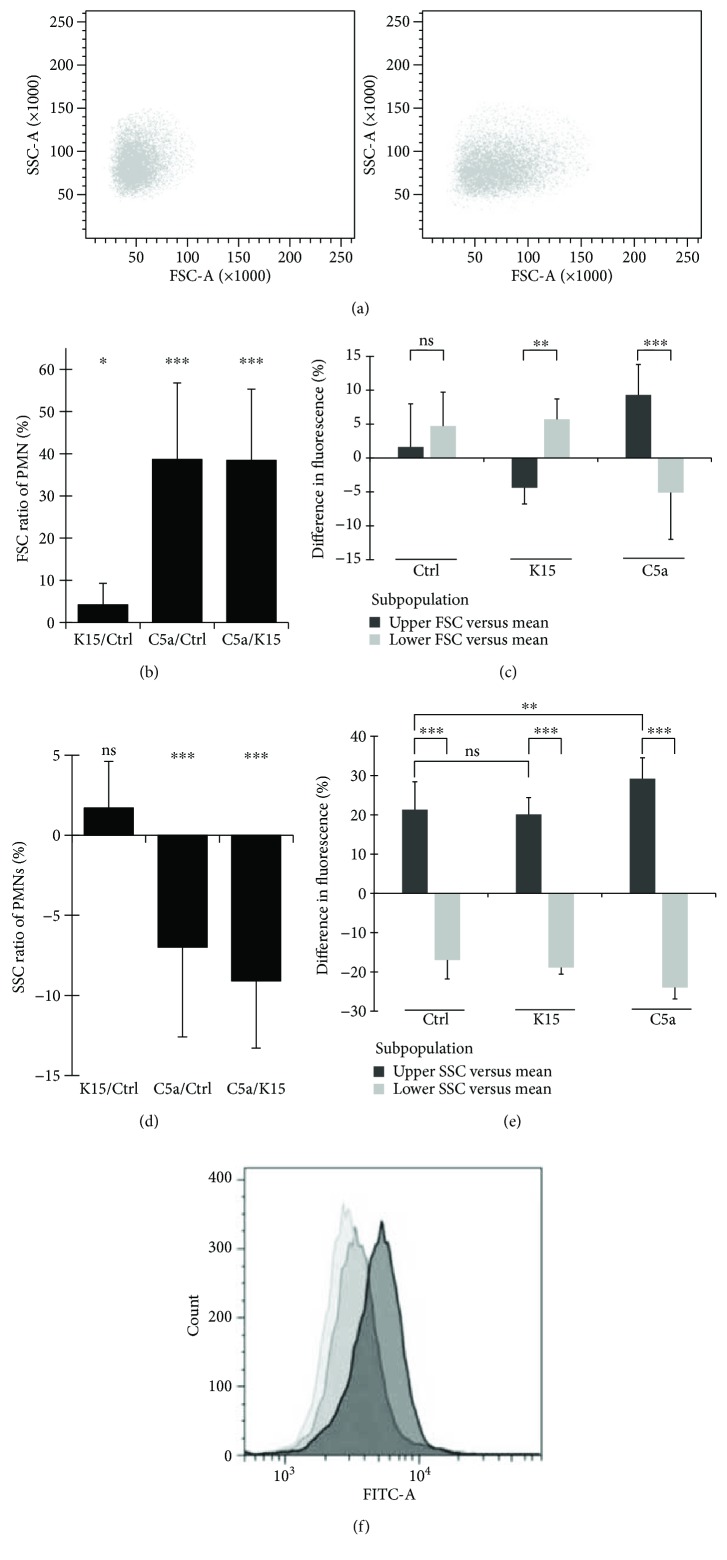Figure 3.
(a) Change in the shape and granularity of PMN after C5a stimulation. Influence of 1 minute C5a 100 ng/ml exposure on SSC-A (indicator for granularity) and FSC-A (indicator for changes in cell shape) on human PMN. (b) C5a-induced change in cell shape cannot be achieved by forced depolarization. Change in FSC-A for human PMN (n = 10–12) after incubation with 10 minutes in buffers plus 1 minute of C5a 100 ng/ml. (c) Independency of cell shape from membrane potential. Difference of membrane potential in human PMN subgroups (n = 10–12). Shown is the relation between the 25% upper and lower part of cells in relation to the average fluorescence. (d) C5a-induced change in cell granularity cannot be achieved by forced depolarization. Change in SSC-A for human PMN (n = 10–12) after incubation with 10 minutes in buffer plus 1 minute of C5a 100 ng/ml exposure = 11 minutes in total. (e) Independency of cell granularity from membrane potential. Difference of membrane potential in human PMN subgroups (n = 10–12). Shown is the relation between the 25% upper and lower part of cells in relation to the average fluorescence. (f) Representative illustration of determination of membrane potential. DiBAC4(3)'s fluorescence was measured in the FITC channel. Each sample consists of Ctrl (PMN in K4.5 = light gray), PMN exposed to C5a 100 ng/ml in K4.5 for one minute (gray), and PMN incubated in K15 (dark gray). ∗ p < 0.05, ∗∗ p < 0.01, and ∗∗∗ p < 0.001.

